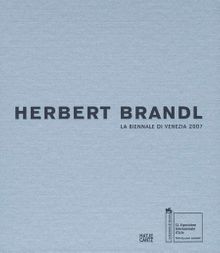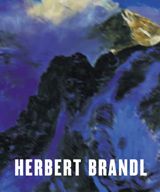ARTIST MONOGRAPHS
|
|
in stock $50.00 Free Shipping UPS GROUND IN THE CONTINENTAL U.S. |
 Herbert Brandl
Herbert Brandl
Published by Hatje Cantz.
Edited by Ingried Brugger, Florian Steininger. Text by Herbert Brandl, Richard Shiff, Florian Steininger, Franz West. Interview by Florian Steininger.
PUBLISHER
Hatje Cantz
BOOK FORMAT
Hardcover, 10.75 x 11.75 in. / 208 pgs / 130 color.
PUBLISHING STATUS
Pub Date 4/30/2012
Active
DISTRIBUTION
D.A.P. Exclusive
Catalog: SPRING 2012 p. 151
PRODUCT DETAILS
ISBN 9783775732802 TRADE
List Price: $75.00 CAD $99.00
AVAILABILITY
Out of stock
STATUS: Out of stock Temporarily out of stock pending additional inventory. |
 Herbert Brandl: Biennale Venezia Austrian Pavilion
Herbert Brandl: Biennale Venezia Austrian Pavilion
Published by Hatje Cantz.
Edited by Robert Fleck. Text by Robert Fleck, Philipp Kaiser.
PUBLISHER
Hatje Cantz
BOOK FORMAT
Hardcover, 10.5 x 12 in. / 145 pgs / 140 color.
PUBLISHING STATUS
Pub Date 8/1/2007
Out of print
DISTRIBUTION
D.A.P. Exclusive
Catalog: FALL 2007 p. 145
PRODUCT DETAILS
ISBN 9783775719971 SDNR30
List Price: $55.00 CAD $65.00
AVAILABILITY
Not available
STATUS: Out of print | 11/28/2010 For assistance locating a copy, please see our list of recommended out of print specialists |
 Herbert Brandl
Herbert Brandl
Published by Hatje Cantz.
Artwork by Herbert Brandl, Peter Weibel. Edited by Gunther Holler-Schuster, Hans Ulrich Obrist. Text by Denys Zacharopoulos, Ulrich Loock.
PUBLISHER
Hatje Cantz
BOOK FORMAT
Paperback, 10 x 11.75 in. / 416 pgs / 402 color.
PUBLISHING STATUS
Pub Date 3/2/2003
Out of print
DISTRIBUTION
D.A.P. Exclusive
Catalog: SPRING 2003
PRODUCT DETAILS
ISBN 9783775712378 TRADE
List Price: $45.00 CAD $55.00
AVAILABILITY
Not available
STATUS: Out of print | 12/11/2007 For assistance locating a copy, please see our list of recommended out of print specialists |

